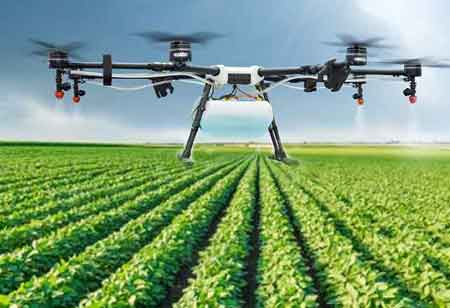Thank you for Subscribing to Agri Business Review Weekly Brief
Importance Of Agriculture 4.0
Industry 4.0 is now developing manufacturing productivity, and some of these innovations are already being used in agriculture. Agriculture 4.0 is a farming management tactic

By
Agri Business Review | Monday, March 14, 2022
Stay ahead of the industry with exclusive feature stories on the top companies, expert insights and the latest news delivered straight to your inbox. Subscribe today.
FREMONT, CA: Industry 4.0 is now developing manufacturing productivity, and some of these innovations are already being used in agriculture. Agriculture 4.0 is a farming management tactic that uses emerging technology and data to improve yields and productivity, allowing farms to work smarter rather than harder.
Due to various technological advances, such as sensors, devices, machines, and information technology, modern farms and agricultural operations function differently than those of a few decades ago. For example, robots, temperature and moisture monitors, aerial photos, and GPS technology are usually used in today's agriculture. With these innovative devices, precision agriculture, and robotic systems, businesses can become more productive, effective, safer, and environmentally sustainable.
Robotic technologies grant more accurate monitoring and management of natural resources, comprising air and water quality. As a result, farmers control plants and animals' cultivation, processing, distribution, and storage.
Benefits that technologies have offered in farming:
Data-driven
Agriculture is a precise science that must maintain soil conditions within specific boundaries to attain maximum crop production. These processes can be made more effective by utilizing data. Collecting data on crop conditions will assist farmers in making precise changes to optimize growth and reduce resource waste.
Precision farming methods in outdoor farming may include integrating smart sensors in the soil to track various variables. Many sensors are available in the market that can be used for agriculture, like electrochemical sensors, which can identify pH and nutrient levels, and mechanical sensors, which can measure soil compaction.
Can deliver the correct solution if the actual state of the soil is determined. Drones can scan a wide area and generate 3D images and collect data.
Robot revolution
Crop harvesting, weeding, and seed planting are activities that agricultural field robots can automate. However, robots in agriculture are not limited to the fields as they can also use them in indoor farming.
Vertical farming means growing crops in layered, vertical stacks under-regulated indoor conditions. The temperature is controlled using heating, ventilation, and air conditioning (HVAC) systems. The environment is accurately adjusted to the plants' requirements, with an optimal amount of light provided by LED bulbs.
Robots will scan every plant and analyze its growth on indoor farms. Then, the robot can transfer it to different locations based on the plant's requirements or life cycle level.





